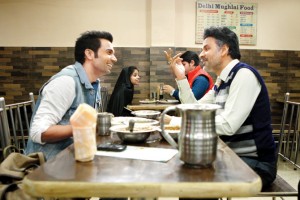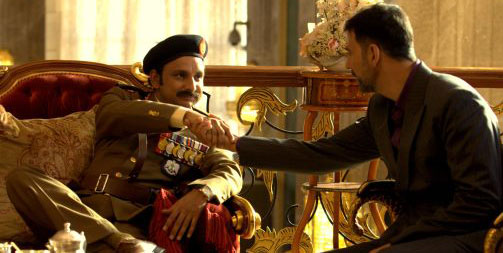
The essence of any movie is the story it tells. These can manifest from a number of places – be it an original plot written exclusively for the film, adaptations from literature and other films or indeed, real life events.
However our film industry has traditionally been far more restrictive in terms of our go-to sources of cinematic stories, as we tend to focus on escapist and formulaic cinema with different takes on tried and tested principles. Not to mention our love for severely plagiarising fiction and styles from the world over. As Roger Ebert once said – “Adaptation can mean betterment, too” – a possibility that seems to have been lost somewhere in translation for many of India’s populist filmmakers.
And yet in recent times and the first quarter of 2016 in particular, we seem to be witnessing a shift towards telling ‘real stories’, those based on true events and real people, in films like Airlift, Neerja and Aligarh. The fact that these have also been among the best films of the year so far, is also a strong statement in itself.
This recent surge aside, this realm of interpreting real lives isn’t an area that Bollywood has typically been over-indulgent with in the past. This is in spite of the fact that we are a nation so full of characters, so full of intricacies and idiosyncrasies and languages and voices that deserve to be explored. We are brimming with culture, heritage and richness in history. It’s pretty hard to actually fathom the extent of just how many important tales, emotions and lives there are in the country. Yet how many of these actually make it to the screens? And yet, we find ourselves repackaging old wine in new bottles time and again – be it rom-coms, actioners or, most of all, supernatural horror thrillers. Even though the texture and regions of these films occasionally stand out, the narratives are depressingly predictable.

There has admittedly been the odd film or two each year inspired from real life events; examples from recent years include films like No One Killed Jessica, Shahid, Special 26, Manjhi: The Mountain Man, Gour Hari Dastaan, Madras Café and last year’s captivating Talvar. However, in the larger picture, the industry has barely scratched the surface while tapping into the sheer volume of stories worth telling in our nation.
Although we have undeniably seen an increasing foray of biopics in Bollywood over the last few years, with films such as Mary Kom, Bhaag Milkha Bhaag and Main Aur Charles, and the upcoming Azhar and Dhoni biopics this year. However these are just one small part of the broader category of movies based on reality. Except for Chak De! India and perhaps Paan Singh Tomar, sports biopic makers have rarely managed to strike a sane balance between melodrama and facts.
If we look at our counterparts in the West, Hollywood is well reputed for giving a great deal of significance to real events, with countless films made on any one historic event. This is the place where it isn’t uncommon for there to be two biopics made on the life of Steve Jobs within a few years of each other. Hindi films had reached a crowded space like this around a decade ago, when an unhealthy obsession with historical events (which only rivals our obsession with mythological tales) resulted in four Bhagat Singh biopics being made around the same time.
This kind of cinema serves an important purpose in our industry for a number of reasons. We are constantly criticised for a lack of variety in our movies, and telling real stories helps break that mould by injecting a much-needed dose of diversity. In addition, these films are not at all restricted to just being ‘arty dramas’ as many would think. In fact, we tend to inject most based-on-real-event movies with a fair dose of ‘Indian-ness’ and colour to make them more accessible. As the examples from this year alone have proven, these films can be very much mainstream in their content and sensibility. More so, these stories deserve a vision and a voice. It is sad how many people, including myself, didn’t know about the heroism of Pan-Am purser Neerja Bhanot. The same stands for the single largest evacuation in human history in Airlift. Finding out that such a record achievement is credited to our country is an unexpected point of pride. At the same time, discovering the fate of Professor Siras, the gay professor suspended from Aligarh Muslim University, is an expected point of shame. It’s difficult to educate while simultaneously being immersive, forcing us to invest and empathise with known faces portraying largely unknown personalities, but these movies have managed to achieve that balance.
And you have to ask yourself, do these films really deviate all that much from the escapist and feel-good (or feel-sad) films that Indian audiences love and embrace? We want to watch movies about heroes and villains, and good triumphing over evil, for which we only need to look at our nation and its history rather than looking to some form of overused fairytale-ish plot formula and tired remakes.

It has also helped that the majority of the latest efforts seem to be remarkably competent movies. Looking at all the examples mentioned above, you will see that these are all fine pieces of filmmaking which will be remembered in the years to come – and not only because they are important in context of history and knowledge, but because the craft does full justice to their legacies. This may be because the makers of these films owe a bigger responsibility to the stories behind them, recognize this, and work harder on research and development before diving into the finer points of the script. By virtue of these kinds of movies, it is also clear that the story and an honest outlook is the real strength of such films, more than the stars or any other superficial and cosmetic aspect.
We are a country full of remarkable people with unique achievements, most of which are unknown to the common man. The film industry has a greater responsibility in trying to reach out – in trying to be, both, the reporter and the storyteller – both, because they deserve a voice, and because of how truth is often stranger (and stronger) than fiction. It is up to the viewers to figure out if they want their directors’ visions to be sincere or exploitative, or perhaps find an ambiguous space between them. For starters, these lives need to unfold on the biggest screens for people to watch, learn, reflect and, hopefully, enjoy this union of enlightenment and intent.







Leave A Comment
You must be logged in to post a comment.